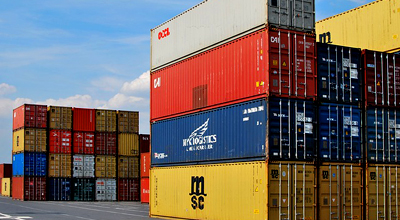Cherries, blueberries, pork and honey to China; meat to the Philippines; honey, tangerines, oranges, grapefruits, lemons and pecans to Brazil; Chia and lemons for India; sweet milk and sheep meat for Japan; Lemons and meat for the United States are just some of the milestones achieved this year in the foreign trade of food and beverages in Argentina.
Food exports represent the most important sector of the entire export matrix and account for between 41% and 45% of everything Argentina ships. Therefore, “we can say that it is the country's main income-generating sector,” said Andres Murchison, Secretary of Food and Bioeconomy at the country's Ministry of Agriculture, Livestock and Fisheries.
Before the consultation on how Argentines make the country stop being a granary and become a supermarket in the world, Murchison clarified: “It's not about being one thing or the other, but we can be both, thanks to wealth, diversity and extension of our country, we can be the breadbaskets and supermarkets of the world”. Regarding this dual role, he argued: “On the one hand, we continue to sell our primary products, recognized worldwide for the great work that producers have carried out for more than two centuries, the technological development and innovation of recent years, which allow us to put ourselves first place as primary producers and exporters”, he highlighted.
However, he emphasized: “On the other hand, we know that Argentina can be much more and that is why we work every day to position our food on the world’s shelves.” The tools that allow progress in this direction and add value are related to business training, differentiation and added value, international agreements such as the European Union-Mercosur, trade promotion strategies that the Ministry carries out together with the Argentine Investment and Trade Agency International (AAICI), trade missions, competitiveness tables by chain.

The numbers
According to data provided by the agricultural portfolio, in 2018, food exports were US$ 25,347 million and reached a total volume of 39.7 million tons, with a value per exported ton of US $ 637.5. While in relation to the first seven months of 2019, a change in trend began to be observed, although international prices decreased, export volumes grew by 17.6% in volume and the same value as in the same period of the previous year.
As for the Argentine export matrix, the secretary recognized that it remains to continue diversifying. However, he highlighted that regional economies have grown, represent around 22% of food exports and are relevant because they are the products with the highest unit value. “In 2018, it was US $ 1,669/t and the total value exported was US $ 6,600 million,” he said.
The most exported foods and drinks are fish products, wine, poultry, pears, lemons, beans, rice and garlic. For Murchison, “the most interesting thing about this diversity is that all Argentine regions are represented, which benefit from these great opportunities to continue adding value at the source, which generates more jobs and roots in the villages”, he concluded.
Author: Eliza Maliszewski | Source: agrolink












